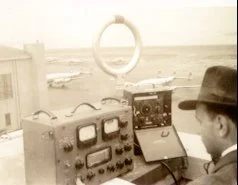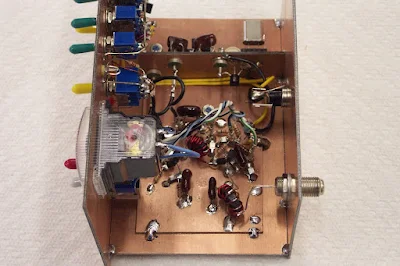 Continuing on negative feedback, on SolderSmoke I recently asked for help in understanding why negative feedback is said to "reduce distortion." Let me know if you think I'm on the right track. Thanks to all who sent e-mails.
Continuing on negative feedback, on SolderSmoke I recently asked for help in understanding why negative feedback is said to "reduce distortion." Let me know if you think I'm on the right track. Thanks to all who sent e-mails.Following Fourier’s advice, let’s think of distortion as an additional waveform riding along with our desired signal. In the diagram we have a 5X voltage amplifier with 20 mV at the input, let’s say that it produces a complex distorted waveform that consists of our desired 100 mV sine wave, along with an ugly 10 mV distortion signal.
The feedback network takes 10 percent of both signals and feeds them back to the input (with a 180 phase shift). At the input, for the desired signal, the 10 mV of feedback meets up with 30 mV of input signal (as in TM 11-455, I’ll keep outputs the same, but increase inputs); we end up with 20mV at the input to the amplifier device. This then goes through the 5X amp and we get our 100 mV output.
But look what happens to the ugly distortion signal: It arises IN the device. When the feedback portion of this distortion gets to the input, it does NOT meet up with an input signal. It just goes back through the amp. So the feedback network takes 10% of the 10 mV distortion, introduces a 180 phase shift and sends this 1 mV waveform through the 5X amp. At the output of the amp we can think of the original 10 mV of distortion combining with what is now a 5mV out of phase signal. In this case, half of the distortion signal is canceled. We can say that compared with the no-feedback amplifier, distortion has been reduced from 10% to 5%. We can say that this circuit discriminates against distortion signals that arise inside the device. The desired signal meets up with the input signal, cancels a portion of it, but then the remaining signal goes through the amp producing the desired amplified signal. But the distortion signal has nothing to meet at the input. It just goes through the amp and then cancels a portion of distortion signal at the output. More desired signal, less distortion.







































